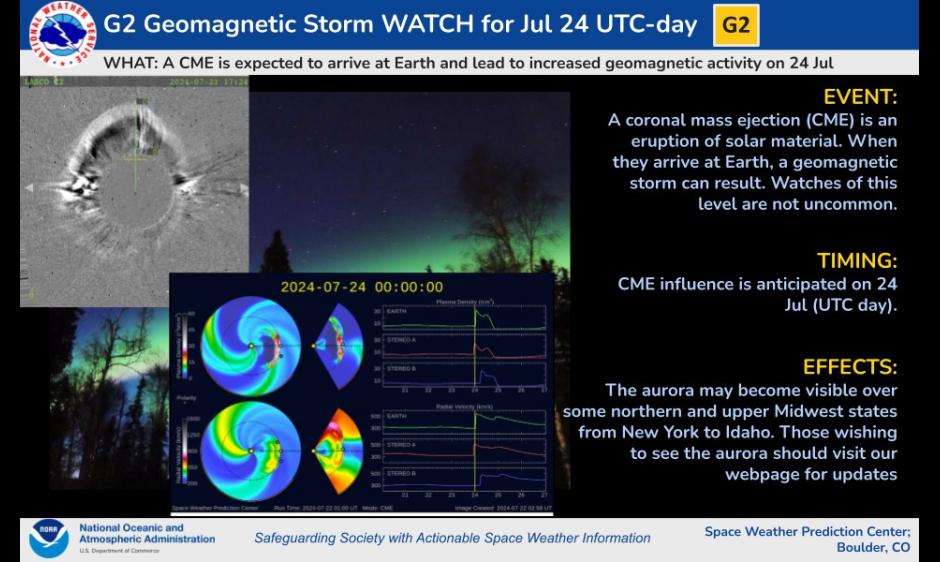The U.S. National Oceanic and Atmospheric Administration (NOAA) has issued a warning about the upcoming geomagnetic storm. It may be accompanied by auroras.

On July 21, the Sun experienced several separate coronal mass ejections directed toward Earth. This led to the formation of a rare halo-coronal ejection, a cloud of magnetic field and charged particles ejected into space at speeds of up to 3000 km/s. It will take them several days to reach our planet.
According to a warning issued by NOAA’s Space Weather Prediction Center, the ejection will reach Earth on July 24. It will lead to a class G2 geomagnetic storm. The G-index characterizes the intensity of a geomagnetic storm in terms of the impact of variations in the Earth’s magnetic field on people, animals, electrical engineering, communications, navigation, etc. On this scale, magnetic storms are categorized into levels from G1 (weak storms) to G5 (extremely strong storms). A G2 storm is classified as moderate.
If the NOAA forecast comes true, the storm is likely to be accompanied by auroras. They are expected to be visible at latitudes up to 55°. This requires being outside of the city in a place with clear skies over the northern part of the horizon and no city lights. At lower latitudes, the auroras will not be visible to the naked eye, but you can try to capture them on camera.
It is also worth noting that geomagnetic activity forecasts made a few days before the onset of the storm do not give a hundred percent guarantee and can change. In reality, a geomagnetic storm can be either weaker or stronger. Therefore, to find out the current situation, it is worth looking at the NOAA Forecast Center page, which gives space weather forecasts for the next 30 minutes. You can also use mobile apps such as My Aurora Forecast & Alerts, AuroraWatchUK, etc.
According to Forbes.com


